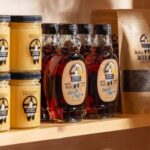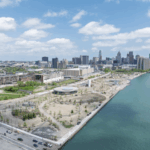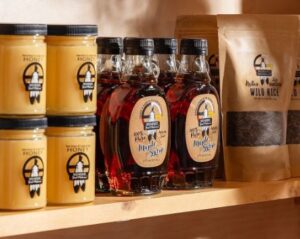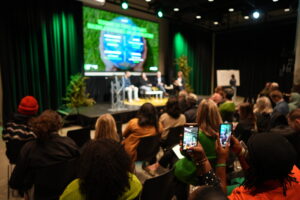Each year an estimated 9,887 metric tonnes, or about 22 million pounds, of plastic winds up in the Great Lakes, raising concern for the sensitive ecosystem. In an effort to curb this fact, a cleanup effort is underway that seeks to not only remove plastics from the waterways but also prevent pollution, to begin with.
Using what are called “SeaBins,” the Great Lakes Plastic Cleanup [GLPC], a coalition of partners hailing from the Council of the Great Lakes Region, Pollution Probe, Boating Ontario, the University of Toronto Trash Team and PortsToronto, is working to clear waterways on the Canadian side of the Great Lakes. SeaBins work by essential gathering trash from waterways for later collection.
Operating since August 27, 2020, Great Lakes Plastic Cleanup is also using what are called “Littatraps” to trap plastic debris in storm drains before it has the chance to enter waterways. According to the group, the cleanup effort is the largest deployment of Seabins ever deployed to a freshwater system.
With partners backing the initiative such as Environment and Climate Change Canada and The Canadian petrochemical company, Nova Chemicals.
“It takes all of us to shape a world that is better tomorrow than it is today. So we are excited to join the Council of the Great Lakes Region, Pollution Probe, Environment and Climate Change Canada, regional marinas, and academic institutions on cleaning up our waterways. Ensuring the long-term environmental health of this public waterway is important to us all,” stated Luis Sierra, president, and CEO, NOVA Chemicals, in a press release about the cleanup.
According to GLPC, cleanups along the shorelines of the Great Lakes show that plastic accounts for around 80 percent of all litter found. They also estimate that approximately 10,000 tonnes of plastic enter the system of waterways each year from both Canada and the United States.
“Only about 9% of plastics are recycled in Michigan, and in Ontario, it’s not much better,” said Council of the Great Lakes Region CEO Mark Fisher. “We need extended producer responsibility and recycled content standards.”
While there is not yet an idea as to the kinds of plastics being collected, the GLPC cites Rafaela Gutierrez, a University of Toronto post-doc student, who is helping lead the classification standards effort on sorting the collected plastic into categories such as films, food wrappers, fragments, etc.
“This data will be synthesized and freely available on the GLPC website to alert the world in real-time about this issue,” said Gutierrez. “It will also be used to inform future policies aimed at reducing plastic pollution.”
While the efforts are solely underway in Canadian waters, there is hope that the success of the efforts will lead to an adoption of SeaBins and Littatraps on the American side of the lake. Such technology is also already used in marinas in Florida and California.
As the Great Lakes Region further envisions a sustainable future, such an effort as seen from the GLPC would only benefit cleanup efforts in American waters.
Interested in further developments happening within the sustainability sector? Subscribe to our newsletter here for weekly updates.

















